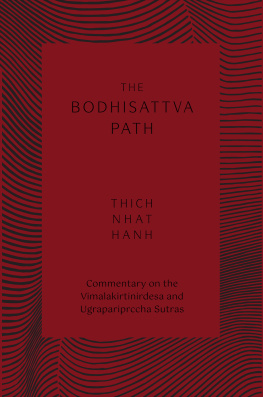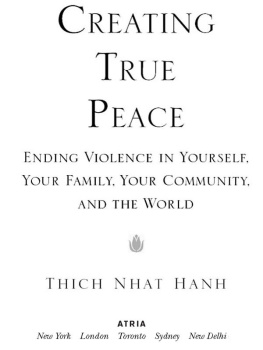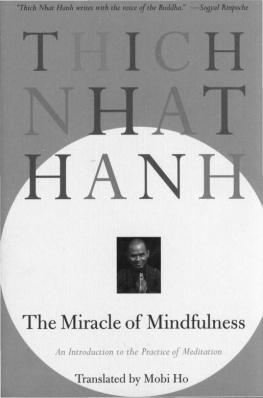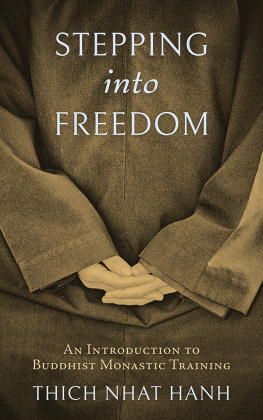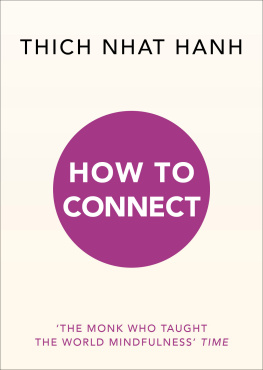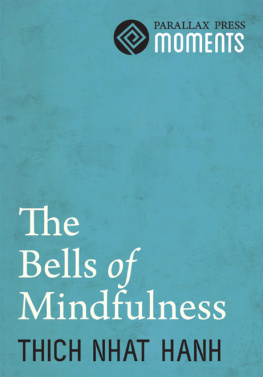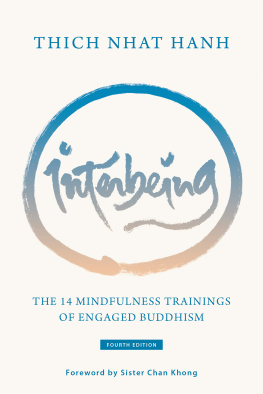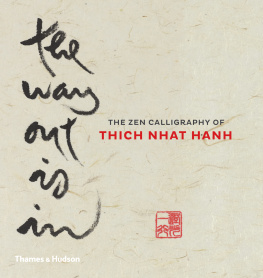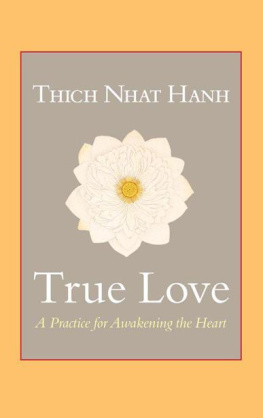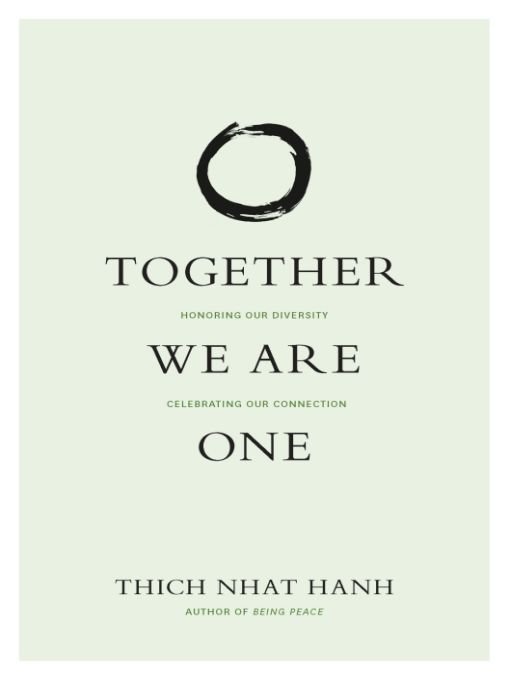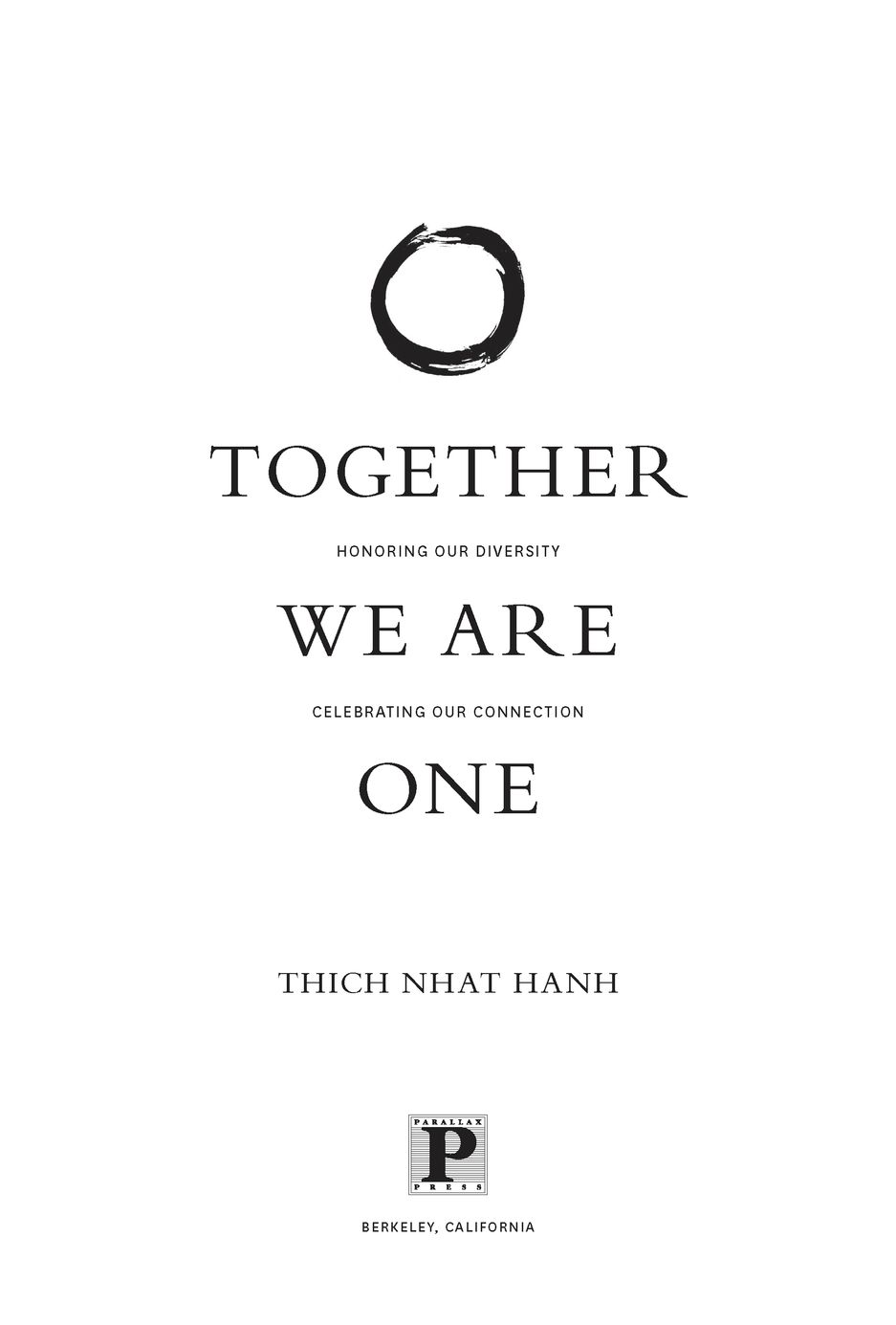Table of Contents
OUR TRUE HERITAGE
The cosmos is filled with precious gems.
I want to offer a handful of them to you this morning.
Each moment you are alive is a gem,
shining through and containing earth and sky,
water and clouds.
It needs you to breathe gently
for the miracles to be displayed.
Suddenly you hear the birds singing,
the pines chanting,
see the flowers blooming,
the blue sky,
the white clouds,
the smile and the marvelous look
of your beloved.
You, the richest person on Earth,
who have been going around begging for a living,
stop being the destitute child.
Come back and claim your heritage.
We should enjoy our happiness
and offer it to everyone.
Cherish this very moment.
Let go of the stream of distress
and embrace life fully in your arms.
THICH NHAT HANH
introduction
Sister Jewel
I had the great fortune to know my great-grandmother. We all called her Mudro, a nickname from one of her grandkids who was trying to pronounce mother. She was born in 1900, in Tupelo, Mississippi. She was the twelfth of fourteen children born to sharecroppers and lived to be 101. Her mother passed away when she was six. As a child, I liked to sit across from Mudro at the kitchen table. Shed sip her iced tea through a straw and tell me stories about her early life.
Shed had a mean stepmother, who took the money Mudro earned when theyd wash peoples laundry together. Mudro told me about the day she stood up for herself. She and her stepmother had left the house together and were walking down the lane. When Mudro turned to go work at a different house so she could keep her earnings, her stepmother grabbed her by the hair and began beating her. Mudro at this point would always tell me with gusto, Girl, I whooped her butt! Her stepmother respected her after that and Mudro kept her own money.
Not long after this, Mudros father caught the stepmother cheating on him and threw her out. The stepmother began living with another man, who abused her. One day Mudro saw her former stepmother on the street. She had been beaten up and had nothing to eat, so Mudro brought her a plate of food. I always remember her compassion and forgiveness towards someone whod mistreated her.
Mudro was able to get some schooling, but never finished high school. She and her father survived the Great Influenza Epidemic of 1918 by drinking the juice of boiled grapefruit skins. She went on to marry and have six children. She loved to sing in the church choir and was a talented dancer and an elegant, beautiful woman well into her old age. Though shed lived through many disappointmentsfive of her six children passed away long before she didshe was never bitter. She accepted her life gracefully and was grateful for all that shed been given. When she slowly shuffled to the podium at the celebration of her hundredth birthday, surrounded by five generations of family and friends, she said with a sparkle in her eye and an impish grin, Im not old. Ive just been here a long time!
Mudros strong, humorous, happy presence in my life is a treasure for me. It is a tangible connection to the past and helps me understand where I come from and all that flows into me from past generations. It is a blessing of endurance, love, and self-confidence. Like Mudro herself, the teachings in this book are a gift of solidity and connection, both to ourselves and to our ancestors. The teachings in this book can help all of us to live our lives with more ease and freedom. In these pages, Thich Nhat Hanh offers deep love for every single one of us.
Thich Nhat Hanh is, among many things, a person of color. Born in Vietnam in 1926, he grew up under French colonial rule. After independence, the U.S. intervention in the Vietnam War was another kind of occupation by a foreign, Western country. Banned from his country for his nonviolent, nonpartisan stance, he has lived in exile in France for forty years. He understands the violence of war, the pain of displacement, and the suffering of ethnic discrimination and cultural exclusion.
It was precisely this homelessness that helped Thich Nhat Hanh discover his own true home. Thay, as his students call him, teaches the essential role our suffering haswhatever kind of personal or social injustice it is born fromas the very ground of our enlightenment. Suffering, once it is revealed and acknowledged, can lead to healing and transformation. We all carry wounds carved by genocide, displacement, migration, relocation, exclusion, and violence. These historical and present-day traumas have shaped our everyday lives for generations.
Buddhist teachings offer ways to hold our suffering in a context of mindfulness and clear seeing. This book encourages us to seek a middle way, neither suppressing nor over-identifying with our suffering. Thay never encourages us to ignore our differences or minimize our suffering. He does not deny that racial injustice and oppression exist. He does not expect us to forget the past and simply get along in the present. Instead, he compassionately and deeply acknowledges our sorrows and pushes us to release those identities that limit us and rewrite the stories we cling too tightly to.
The journey of this book begins some ten years ago. For several years, people of color Dharma discussion groups had been organized at Thays retreats in response to the growing number of requests by retreatants of color. A group of practitioners had also been meeting to look into how our Sanghas could be more inclusive of people of color. In 2003, I traveled with Thay and the Plum Village international Sangha to China. During that trip, Larry Ward, Ariel Blair, and myself asked Thay if he would offer a retreat for people of color at Deer Park Monastery. He nodded immediately and pointed to his own golden brown skin.
In March 2004, the first Colors of Compassion retreat was offered at Deer Park Monastery. Over three hundred people of Asian American, Pacific Islander, African American, Latino/a, Native American, and Middle Eastern descent, and a few European American family members attended. Many people were new to Buddhism. Many were attending a retreat for the first time. A good number of people were lesbian, gay, bisexual, and transgender. This retreat was the largest people of color Buddhist retreat in North American history. The healing and togetherness that blossomed at this first retreat was so inspirational that Thay and the Plum Village Sangha have committed to offering them on a regular basis.
Buddhist retreats for people of color are now regularly offered around the U.S., as well as unlearning racism trainings that utilize the insight of Buddhist meditation and practice. Both are expressions of Buddhisms growing relevance to the social and cultural environment of North America. Together We Are One is an offering to this healing and transformative dialogue. Filled with insights, stories, and poems, this book illustrates how the Dharma is practiced by people of color in ways as beautiful and varied as our ancestries. Shaped by the listening circles, testimonios, and call-and-response traditions in our communities, each chapter is an interwoven dialogue between Thay, Dharma teachers, and retreatants from our Colors of Compassion retreats. It also includes Dharma talks by Larry Ward and myself from a small people of color retreat, without Thay, held in 2006.


